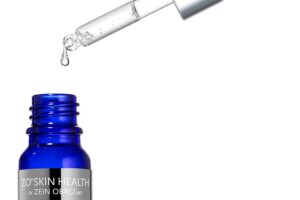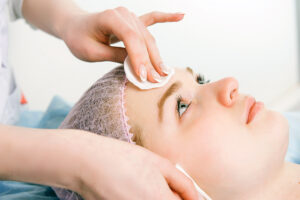Definitions
Menopause
12 months have passed since your last period.
Perimenopausal
Less than 12 months have passed since your last period, and you have symptoms associated with the menopause.
Combined Continuous HRT Regime
Contains both oestrogen and progesterone. Oestrogen is used continuously throughout the month. Progesterone is used for most of the month.
Sequential HRT Regime
It contains both oestrogen and progesterone. The oestrogen is given throughout the whole month, and the progesterone is only used for part of the month.
What is HRT?
HRT commonly compromises of two hormones oestrogen and progesterone. Oestrogen is given to help the main symptoms of the menopause and perimenopause. Women who do not have a uterus will normally have oestrogen only. Those with a diagnosis of endometriosis may have oestrogen and progesterone together even though the patient has had a hysterectomy, this is an individual case review decision taken after a detailed discussion with the patient.
Oestrogen
Oestrogen helps the symptoms in relation to the change. Evidence shows that it is effective at treating the symptoms in most women. It can also offer health benefits with regards to heart disease and bone health.
When you take oestrogen, the lining of the womb can thicken, this can increase your risk of womb (uterine) cancer. This is where the second hormone, progesterone comes in.
Progesterone
Progesterone is given to women who have a womb (uterus). Taking progesterone helps prevent the thickening caused by oestrogen, so reduces your risk of uterine cancer.
Progesterone comes in various forms; pills, Mirena hormone coil, or together with oestrogen in a patch. Evidence does not support taking progesterone on its own or if you don’t have a womb (uterus) and have been advised you only need oestrogen. Taking progesterone when not needed can be associated with increased breast cancer risk and there is little evidence to show it helps with symptoms.
Vaginal Oestrogen
These are low doses of oestrogen prescribed to work on the vaginal area to relieve vaginal dryness, irritation or a sensation that you have a urine infection. It can come as a small pessary, a flexible ring which are inserted
in the vagina or a cream to insert or apply around the vaginal opening. This type of HRT can take 3-6 months to notice a improvement.
There are very few associated risks. Emerging evidence shows no increased breast cancer risk, but this is still under review. The patient information leaflet with the medication will state a breast cancer risk, but this is low.
Benefits of HRT
The benefits are symptom control and allowing the female experiencing the symptoms to have a better quality of life. Evidence shows it can help with hot flushes, night sweats, mood changes associated with the menopause and brain fog (becoming forgetful).
It has also been shown to reduce risk of heart disease if taken before the age of 60 or within 10 years of the periods stopping. Research indicates that HRT can help prevent bone loss and reduce your risk of osteoporosis and of breaking bones (bone fractures). HRT can strengthen bones and reduce your risk of fractures.
Risks of HRT
Breast Cancer
Combined HRT (both oestrogen and progesterone) can be associated with a small increased risk of breast cancer. It should be noted that having excess weight for your height (equivalent to a high body mass index called the BMI) or having more than 14 units of alcohol per week is associated with higher risks of developing breast cancer compared to HRT.
Evidence shows that HRT with oestrogen alone is associated with little to no breast cancer increase. You would only be advised to take oestrogen only if you have had a hysterectomy (womb removed) or do not have a womb for any other reason.
Blood Clots
There is a small increase of blood clots if tablet form of HRT (containing oestrogen) is taken. The blood clots can occur anywhere in the body and if they occur in the brain, it can lead to a stroke. The research evidence shows if oestrogen is taken transdermally (through the skin) such as a patch, gel or a spray, then the risk of blood clots does not increase. This does not apply to progesterone pills.
Endometrial Cancer
It is important that if you have a womb, you continue to take both hormones (oestrogen and progesterone) as advised. Taking progesterone alongside oestrogen helps reduce your risk of the lining of the womb thickening and then potentially a cancerous change developing.
Ovarian Cancer
HRT use is associated with an increased risk of ovarian cancer. It is important to note that ovarian cancer is rare, so the overall risk is very small, it equates to around 1 additional ovarian cancer case for every 1000 women using HRT for 5 years.
Common Side Effects
These can occur when starting HRT, usually they do settle in the first few months but can persist with some patients.
· Bloating and fluid retention
· Breast soreness
· Effects on mood
· Irregular vaginal bleeding is a very common side effect.
If you still have periods, HRT can cause the period like bleeding to be heavy or more frequent. Normally this settles in the first 3-6 months. If it is heavy and unmanageable then please book a review. This is a common side effect but some women may not notice a change.
If you have not had periods for several months or years, it can lead you to have vaginal bleeding. This can be light and normally settles within the first 3-6 months. We normally don’t need to do anything for this. If the problems persist beyond 6 months or if the bleeding is unmanageable or heavy at any point, then please speak to a clinician.




